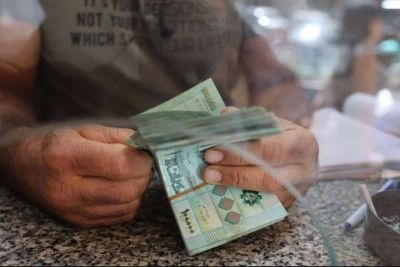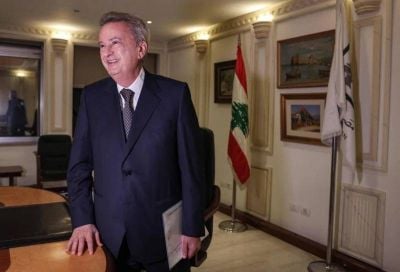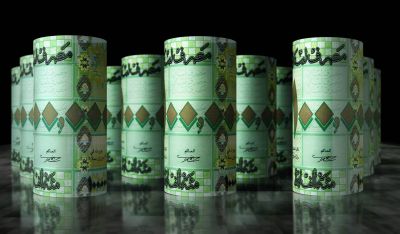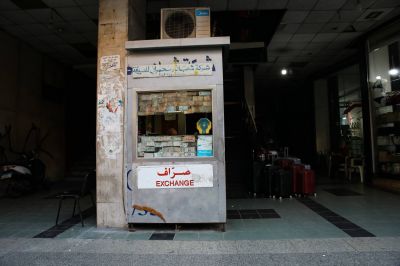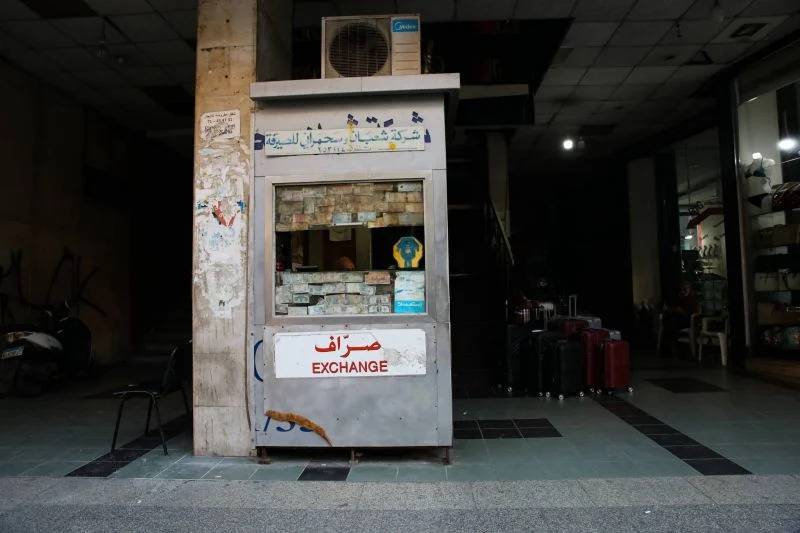
According to BDL figures, Lebanon has 302 licensed stockbrokers, who share the market with many other illegal players. (Credit: Florient Zwein/Hans Lucas/L'Orient-Le Jour)
The black market exchange rate, which includes illegal agents and those authorized by Banque du Liban, entered a new phase of turbulence this week.
Passing records of LL44,000, LL45,000, and LL46,000 to the dollar between Sunday and Wednesday, the dollar rate rose as much in three days as it did in the 10 days before.
The peak came on Wednesday, reaching LL46,500 to the dollar by midday, according to tracking platform Lirarate.com — a level around which it appeared to have stabilized by late afternoon before falling back a few hundred lira.
The rate of the Sayrafa platform, operated by the BDL and moving separately from the fluctuations of the market, remained frozen at LL31,200 to the dollar.
The union of pharmacists said in a statement during the day that “deliveries of medicines and milk” had been almost “totally suspended” in the face of the exchange rate's unpredictable fluctuation — a sign of the market’s instability.
Loss of balance
“No one knows how it will evolve,” a foreign exchange agent in the Beirut area who did not wish to be named, told L’Orient-Le Jour. “Even asking how much the rate is today is meaningless. It only takes [one] transaction of about $100,000 to be processed for the rate to lose its equilibrium.”
He added that he applies the rate that is communicated to him on a WhatsApp group with many of his colleagues, saying that “BDL is also in the loop.”
According to several banking sources, the central bank sets the rate charged by money transfer companies, which are allowed since early 2022 to carry out foreign exchange operations if they wish.
BDL figures indicate Lebanon has 302 licensed money changers, who share the market with many other illegal players, including several widely known hubs in Beirut (Barbir and southern suburbs) and Tripoli.
This market grew exponentially as depositors deserted the banking sector, finding themselves victim to banks’ restrictions on access to their foreign currency accounts since the crisis began in 2019.
The market is particularly opaque and was the focus of an investigation launched in 2020 by Ghada Aoun, the public prosecutor at the Mount Lebanon Court of Appeal. The move came amid political tensions between the camp of former president Michel Aoun and BDL governor Riad Salameh.
At the beginning of 2021, the Lebanese financial prosecutor referred the case to the Special Investigation Commission, in the context of proceedings against several foreign exchange agents for acts relating to a “money laundering” crime.
However, both procedures have not yielded any tangible results.
Requests from Syria
This opacity makes it virtually impossible to identify the exact causes of market fluctuations. Among those mentioned yesterday in banking circles and exchange offices were:
• An increase in demand for dollars on the Lebanese market driven by stakeholders from Syria, a country also in crisis and whose regime is targeted by sanctions, notably from the US administration. Damascus recently devalued its currency, raising the exchange rate from SYP2,814 to 3,015 to the dollar, while the black market rate recently passed the SYP6,000 mark. Demand for dollars is also said to be strong in Lebanon’s Bekaa Valley, according to another currency broker who also spoke on condition of anonymity.
• An increase in the number of dollars taken by the BDL and the banks, which buy market-rate dollars then sell them at the Sayrafa rate via BDL Circular No. 161, which recently marked its first anniversary.
• The fact that the BDL has been selling fewer dollars in the market because it relies on the foreign currency brought back to Lebanon by expatriates during the holiday season. Caretaker Tourism Minister Walid Nassar has said he expects more than 500,000 visitors to land in Lebanon during this period.
• The fact that civil servants’ salaries, paid in lira, were tripled when the 2022 budget came into effect on Nov. 15. The banks have been swamped by thousands of civil servants who have come to withdraw directly in lira or dollars, notably based on Circular No. 161.
Recent developments
This new exchange rate panic echoes some recent episodes.
In mid-Jan. 2022, the lira decreased by nearly LL10,000 to the dollar in one day, falling from more than LL33,000 to the dollar to less than LL24,000, following several days of erratic fluctuations.
The drop came at a time when there were signs that the government, which had been suspended amid political tensions, would resume its meetings.
Banking sources contacted at the time attributed the fluctuation to a large injection of dollars into the market by the BDL.
At the end of May, the lira hit near LL40,000 to the dollar mark, before the exchange rate dropped by LL10,000.
This trajectory had more or less reversed by the time the BDL called on the local banking sector not to drag its feet in making foreign exchange transactions involving the Sayrafa platform rate.
Finally, on Oct. 23, the lira-dollar exchange rate appreciated by nearly LL5,000 in one day, shortly after suddenly breaking through the LL40,000 mark for the first time in its history.
The adjustment came once again in the wake of a statement by Salameh that the institution would stop buying dollars at the market rate from money transfer companies, but would continue to sell them at the rate of its Sayrafa exchange platform.
Some money changers now expect an announcement from the BDL, which has just extended two of its mechanisms for circumventing banking restrictions (Circulars No. 151 and 161).
However, it is not certain whether the governor can really have any influence on the matter other than by pouring large quantities of dollars into the market.
The use of this leverage is currently limited by the low level of the country’s foreign exchange reserves: $10.22 billion on Dec. 15, according to the latest official figures, not counting the $5.03 billion in Eurobonds (foreign currency debt securities) or the $16.4 billion in gold.
This article was originally published in French in L'Orient-Le Jour. Translation by Sahar Ghoussoub.
